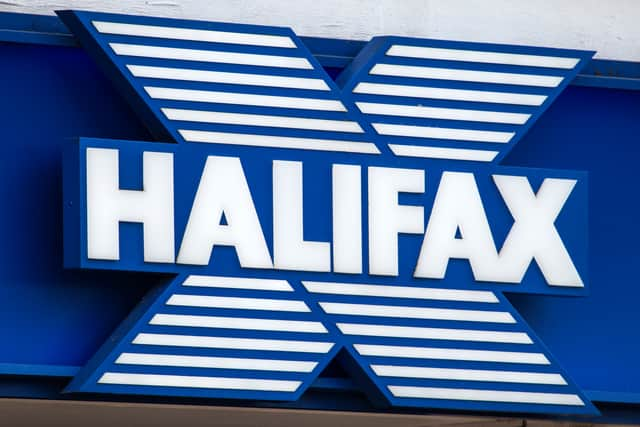House price indexes: what’s the difference between Zoopla, Rightmove, Halifax, Nationwide and ONS HPIs?
and live on Freeview channel 276
House prices across the UK have been fluctuating wildly since the start of the first Covid-19 lockdown in March 2020.
After years of relatively reliable annual growth following the 2008/09 recession, prices had a short, sharp downturn when the strict restrictions on daily life were imposed during the pandemic. But over the intervening three years, a mix of government policy and consumer habits have seen them rise to record levels before falling steeply.
We have been tracking these changes by covering the major house price indexes (HPIs). The most notable ones are published monthly by property listing websites Rightmove and Zoopla, lenders Halifax and Nationwide, as well as the UK’s official statistics body the Office for National Statistics (ONS).
In recent months, these have all recorded some form of drop in house price inflation stemming from the fallout from Liz Truss’s Mini Budget in September 2022. While most of the HPIs are still reporting that house prices are above where they were a year ago, a combination of high interest rates and record inflation appear to have dampened demand in the property market.
Interest rates look set to go much higher than previously expected after worse-than-expected inflation data for April suggested the cost of living crisis is not abating as quickly as everyone would have hoped. Mortgage rates have already been climbing in the wake of the latest CPI release, while a large number of products have been withdrawn from the market. It all means more people are likely to struggle to enter the market.
But, while the various leading house price indices have shown broadly similar movements in the market, the changes they have recorded are all different. So, how is that the case - and what do the latest versions of their HPIs tell us? NationalWorld has broken down their methodologies and latest figures to find out.
What are the differences between house price indexes?
All of the house price indexes that NationalWorld covers show different average prices and market movements. The reason why is down to the source of their data and the point in the house buying process that this data covers. Here is a rundown of all of the key HPIs, what they tell us, and their key strengths and limitations:
ONS
The ONS’s HPI is arguably the most comprehensive available. It is produced in collaboration with the Land Registry (the official governmental body that monitors property ownership in England and Wales) and the equivalent bodies in Scotland and Northern Ireland.
These public organisations record almost all property transactions across all areas of the country, and show the completed sales price from each one. The ONS takes this data and can break it down into property type and location.
Given this dataset covers tens of thousands of transactions, its size is its limitation as well as its strength. The sheer scale of it means it tends to lag more than a month behind the other indexes NationalWorld reports on, and the figures for each month can change as more data for a particular month becomes available (so the figures we report are provisional rather than the final total).
The ONS HPI contains both seasonally-adjusted and non-seasonally adjusted data. When it is seasonally-adjusted, it means it removes seasonal or calendar effects from the dataset, for example, the usual spike in transactions we tend to see in the spring. Most of the other HPIs adjust their data in this way.
Halifax
As part of the Lloyds Banking Group - one of the biggest mortgage lenders in the UK, granting between 15% and 20% of all residential mortgages - Halifax has a key overview of the mortgage market. Its HPI uses its own mortgage approval data - as well as those of other Lloyds Banking Group brands - to give us one of the most comprehensive perspectives on how much properties sell for.
To do so, it standardises homes and the places they are located in so that they can be compared in a like-for-like way that provides us with an average price. It is also one of the longest-running HPIs, having been started in 1983.


However, its big limitation is that its data does not track whether or not the property transactions in question made it through to completion or fell through. While it is a more current indication of what’s going on in the housing market than the ONS HPI, it is not as current as some other HPIs, like Rightmove’s.
Nationwide
Like Halifax, Nationwide is one of the UK’s biggest lenders, covering around 12% of the mortgage market. The building society tracks house prices in a similar way to Halifax, taking its data from its own mortgage approvals’ statistics. It says it does this to make its HPI more current than it would be if it tracked its mortgage applications right through to completion, as the ONS statistics do.
It weights the value placed on particular property characteristics by its customers (e.g. property type or number of bedrooms) to build a typical UK home that can then be valued and tracked over time, thus providing us with an average price. The make up of this representative property is the reason why it records different figures to Halifax.


As with Halifax’s HPI, its data is not as current as Rightmove or Zoopla’s - but tends to be more up to date than the ONS’s HPI.
Rightmove
Thanks to its position as one of the biggest property listing sites in Great Britain, Rightmove’s HPI shows us the asking prices of properties all over England, Scotland and Wales - with the exception of central London. It excludes the capital because its housing market tends to operate in a different way to the rest of Britain.
The great strengths of Rightmove’s data are its size (it includes up to 200,000 property listings from some 13,000 estate agents) and its timeliness (its data period covers a month leading up to around a week before its publication). As such, it can give us a strong indication of how buyers and sellers are feeling and operating in as close to real time as possible.
It also breaks down its data into the types of property different buyer groups would go for: first-time buyers (e.g. two-bed homes), second steppers (like three- or four-bed properties), and top of the ladder buyers (e.g. four-bed detached homes and above).


Given it covers the early stages of the house buying process, the Rightmove HPI’s great limitation is that it doesn’t show us what homes really went for after being taken off the market. The fact it also does not cover Northern Ireland means it does not offer a full UK picture. As Northern Irish homes tend to be cheaper than those in other parts of the UK, Rightmove’s average price tends to skew higher than those of other HPIs.
Zoopla
Property listing website Zoopla takes a four-week period and then uses sold prices, mortgage valuations and agreed sales data to make up its HPI statistics. So, unlike its rival Rightmove, it does not use asking prices. It also covers all of the UK.
Zoopla’s index focuses on 20 cities but uses data from 64 in total. It says it does this because major urban centres are “the focus for economic growth and demographic change” in the country.
Unlike other HPIs, it does not standardise properties to come up with an overall average price. Instead, it uses a repeat sales methodology - i.e. it tracks a property’s value each time it comes to market - to build a picture of how much different property types sell for in different locations. The downside of this is that it is reliant on tracking properties that have been sold at least twice since January 1995 (although turnover in cities tends to be higher than in the countryside) and also assumes those homes have not undergone major changes (e.g. have had an extension added).


Its big strength is that it uses data from throughout the home buying process to determine what’s going on in the UK’s housing market. But its limitation is that it solely focuses on cities, so it does not provide a full picture of how prices are changing across the UK.
What do the latest house price indexes show?
Here, at a glance, are the latest findings from each of the major house price indexes. NationalWorld updates them as soon as new figures are released.
ONS
The latest edition of the Office for National Statistics HPI was published in late May but covered the month of March 2023. It showed UK house prices fell £3,400 month-on-month - but remained 4.1% (£11,200) higher than they were in the same month in 2022.
The average price of £285,000 was also (£7,600) below the all-time record of almost £292,600 that was recorded by the UK statistics agency in November 2022. The reason why this record peak was posted several months after those recorded by Halifax and Nationwide is likely to be down to the length of time between mortgage approvals and completions.


The next version of the ONS index, which will cover April 2023, is set to be published on 21 June.
Halifax
The Halifax HPI for April 2023, which was published on 9 May, showed a £1,000 (0.3%) month-on-month drop in the average UK property price. It means a typical UK home now comes in at £286,896 - just 0.1% above the April 2022 average. This figure is £7,000 (2.4%) below a record peak of £293,992 recorded in August 2022, but almost £5,000 above a low of £281,713 posted in December.
As well as publishing a monthly HPI, Halifax also reports on specific markets throughout the year. In April, the bank showed that seaside towns were seeing a house price boom despite the recent economic turmoil.
Its next edition will be published on 7 June 2023 and will cover the month of May.
Nationwide
Out of all of the HPIs NationalWorld covers, Nationwide’s has tended to have the most pessimistic reading of UK house prices since the Liz Truss Mini Budget. By its calculation, annual comparisons have been in negative territory since February and are currently running at -3.4% (as of May).


After recording the biggest annual fall in house prices since 2009 in March, the average price has recovered slightly to £260,736 - although this is still 4% down on August 2022’s record price of £273,751.
The building society currently envisages a “subdued” market over the coming weeks and months owing to strong “headwinds” caused by recent inflation-related turmoil in mortgage markets. Its next report is due in late June/early July.
Rightmove
Rightmove’s most recent house price index, published on Monday (22 May), showed that asking prices in England, Scotland and Wales grew 1.8% (£6,647) month-on-month to £372,894 between April and May.
With previous releases having shown that sellers were accepting hefty discounts given weak demand in the property market, the latest figures showed more of a return to pre-Covid levels. The average difference between the final asking price and the agreed sale price was 3.1%, the property listing site said. Its next HPI is due in late June.
Zoopla
According to its latest HPI covering four weeks over April and May, which was published on 30 May, Zoopla found annual house price growth had slowed to 1.9%, with the average price now coming in at £260,700. Typical prices in its headline 20 cities were £296,000 - 1.7% up year-on-year - with the strongest growth recorded in Nottingham (+3.9% to £202,100). It said confidence appeared to be returning to the market as a result of falling mortgage rates and greater numbers of available properties (compared to long-term averages).
The housing website expects prices to remain similar over the remainder of 2023. However, it also warned recent mortgage market turmoil could lead to a fall in buyer demand, and therefore a fall in prices, by the end of 2023. Its next estimate will be published in late-June/early-July.
Comment Guidelines
National World encourages reader discussion on our stories. User feedback, insights and back-and-forth exchanges add a rich layer of context to reporting. Please review our Community Guidelines before commenting.
